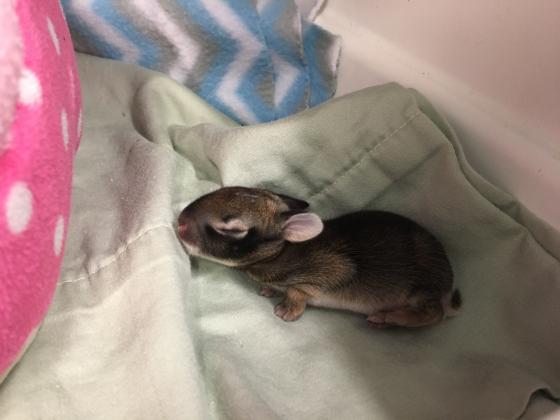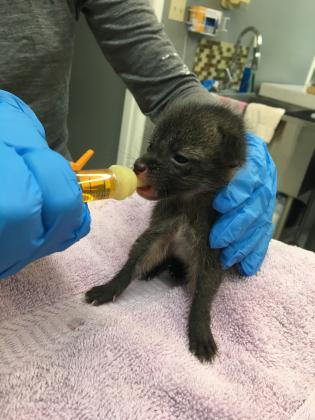Stormy weather brings a flood of displaced animals
When the rain pours and the wind howls, humans aren’t the only ones frightened by the intense weather; Bastrop County’s animal residents, both wild and domesticated, are affected as well.
A large storm system rolled across the I-35 corridor last Wednesday night and early Thursday morning, bringing with it heavy winds, rain and hail. Although the worst of the storm was felt on the other side of Austin, Bastrop County gathered between two and three inches of rain.
After the storm, Austin Wildlife Rescue (AWR), a nonprofit dedicated to rescuing and rehabilitating wild animals in and around Austin, saw a sharp increase in animals coming into both their intake center in Austin and their new rehabilitation center outside of Elgin. The previous weekend’s storms brought in around 100 animals to AWR, and executive director Hayley Hudnall expected another 100 to 150 animals to come in as a result of Wednesday’s storm.
When heavy winds come through, nests belonging to squirrels and birds are knocked out of trees, Hudnall said. High winds will blow birds right out of the air, and they can get waterlogged to the point that they can’t get back off the ground. Additionally, heavy rains will flood out animals who live in dens in the ground, such as foxes and rabbits.
Hudnall said this storm, with its strong winds and rain, brought in numbers of animals similar to previous storms. At this time of year, more baby animals are brought in to AWR during these weather events.
Earlier this year, AWR opened a new rehabilitation facility on about seven acres of land in Bastrop County near Elgin. A number of the animals, more than Hudnall had expected, were brought in due to this storm came in through the Bastrop County rehab center.
Before the new facility was built, AWR worked solely out of their three-room intake center in Austin, but now they have more space and more staff to better care for the animals, Hudnall said.
“We were working out of those three small rooms in our intake center, and it was hard enough as it was,” she said. “And when we have these weather events, it just makes it that much harder and that much more crowded. Now, we’re able to spread all these animals out into their different rooms.”
Hudnall stresses that people who find and rescue a wild animal should not feed it, since the wrong food can do more harm to the animal. She said the best thing is to bring the animal inside and keep it warm and dry until it can be brought to AWR.
“Having that calm, quiet place for the night is the best thing anyone can do for an animal,” Hudnall said.
Once the animal arrives at AWR, a veterinarian looks at the animal if needed, and they are put on the right diet and cared for by AWR until the animal is ready for release.
Similarly, the number of animals at the Bastrop County Animal Shelter increases whenever a big storm comes through, Bastrop County animal services director Ashley Hermans said. Over the past week, many stray animals have come to the shelter.
“If you could graph it all, you would probably note an uptick anytime you have significant thunderstorms, and holidays with fireworks,” Hermans said. “Anecdotally, I see more animals coming in with that kind of weather, I see more reports of lost and found pets on social media, and I even see more animals on the side of the road that have been hit by a car.”
Storms with high levels of thunder and lightning cause the strongest reaction from animals who are prone to panic, Hermans said. Animals with a much better sense of hearing than humans can be more sensitive to these loud noises.
“It can cause them to panic and run away trying to find safety, and in the course of doing so, they can completely lose their way,” Hermans said. “In that environment and that situation, they take off so fast that they really can’t find their way back.”
If a storm is expected soon, Hermans asks that owners make sure the pet has readable, up-to-date identification on their collar. During the storm, she suggested to bring pets inside, keep them company to comfort them, turn up the television, radio or other noises to help drown out the noise of thunder and take advantage of products designed to calm pets for animals who are especially afraid. Afterwards, she added, check that the animal’s outdoor enclosure has not been damaged in the storm.



